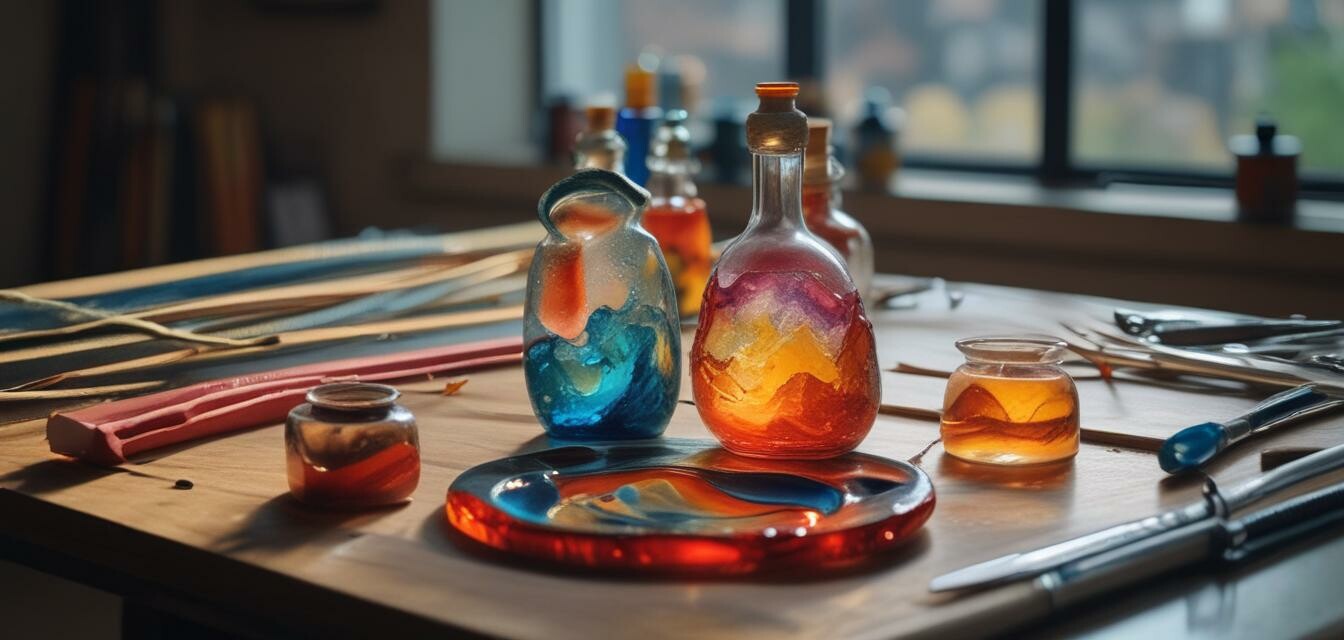
The Impact of Kiln Atmosphere on Glass Art
Key Takeaways
- The atmosphere inside a kiln influences the final appearance of glass pieces.
- Adjusting the kiln's temperature and reduction or oxidation atmosphere can reduce bubbles.
- Understanding kiln atmosphere can enhance color and create distinct finishes.
- The choice of kiln type and materials affects the overall outcome in glass art.
- Experimentation with different atmospheres can lead to unique artistic results.
When creating glass art, many factors contribute to the beauty and quality of the finished piece. Among these, the atmosphere in the kiln plays an essential role. The kiln atmosphere is not just about temperature; it encompasses the gases present and how they interact with the glass materials. In this article, we’ll explore how kiln atmosphere affects glass art in various ways, such as reducing bubbles, enhancing colors, and creating unique finishes.
Understanding kiln atmosphere
The kiln atmosphere can be generally categorized into two types: oxidizing and reducing. Each type affects your glass differently, leading to variations in color, texture, and clarity. Below is a table summarizing how different atmospheres impact glass characteristics:
| Atmosphere Type | Effects on Glass Art |
|---|---|
| Oxidizing | Enhances clarity and brighter colors; maintains metallic finishes. |
| Reducing | Can deepen colors and create intriguing surface designs; may produce more textures. |
Reducing bubbles in glass art
Bubbles in glass can diminish the quality of a finished piece. The kiln atmosphere directly contributes to bubble formation and their reduction. Here are some tips to consider:
Tips to reduce bubbles
- Use a controlled reducing atmosphere to limit bubble formation.
- Ensure proper firing schedules and ramp rates.
- Experiment with different glass compositions to find optimum results.
- Consider using flat surfaces or molds that reduce trapped air.
Enhancing colors in glass art
The correct atmosphere can enhance the vibrancy and depth of colors in glass. Here are some details on how atmosphere types can change color effects:
- Bright colors: Achieved through oxidizing atmospheres.
- Rich and deep colors: Enhanced through reducing atmospheres, especially for metals like cobalt or copper.
- Surface variations: Resulting from varying atmospheres during a firing cycle.
Creating unique finishes in glass art
One of the most exciting aspects of working with glass is the potential for unique finishes. The kiln atmosphere can influence the final textures and patterns that arise:
- Experiment with layering different glasses in various atmospheres.
- Test firing under different conditions to achieve distinctive looks.
- Use specific materials to promote reactions based on the kiln atmosphere.
Choosing the right kiln
When selecting a kiln, consider its design and controls, which should allow flexibility in atmosphere manipulation. There are many types of kilns available suitable for glass making:
| Kiln Type | Best For | Features |
|---|---|---|
| Tabletop kilns | Beginners | Compact, easy to use, ideal for small projects. |
| High-capacity kilns | Experienced artists | Large size, capable of larger projects and multiple pieces. |
| Programmable kilns | Advanced techniques | Allows for detailed control of temperature and atmosphere. |
Conclusion
Understanding the impact of kiln atmosphere on glass art is crucial for any artist looking to refine their technique. By manipulating the atmosphere, artists can reduce bubbles, enhance colors, and create unique finishes in their glass pieces. It’s an ongoing journey of experimentation and discovery that leads to beautiful results.
Pros
- Improved aesthetic appeal of glass pieces.
- Greater control over the artistic process.
- Ability to achieve unique finishes.
Cons
- Requires experimentation to master.
- Potential for varying results without understanding.
Explore More
For more information on enhancing your glass art skills and understanding tools available, check out the following links:

